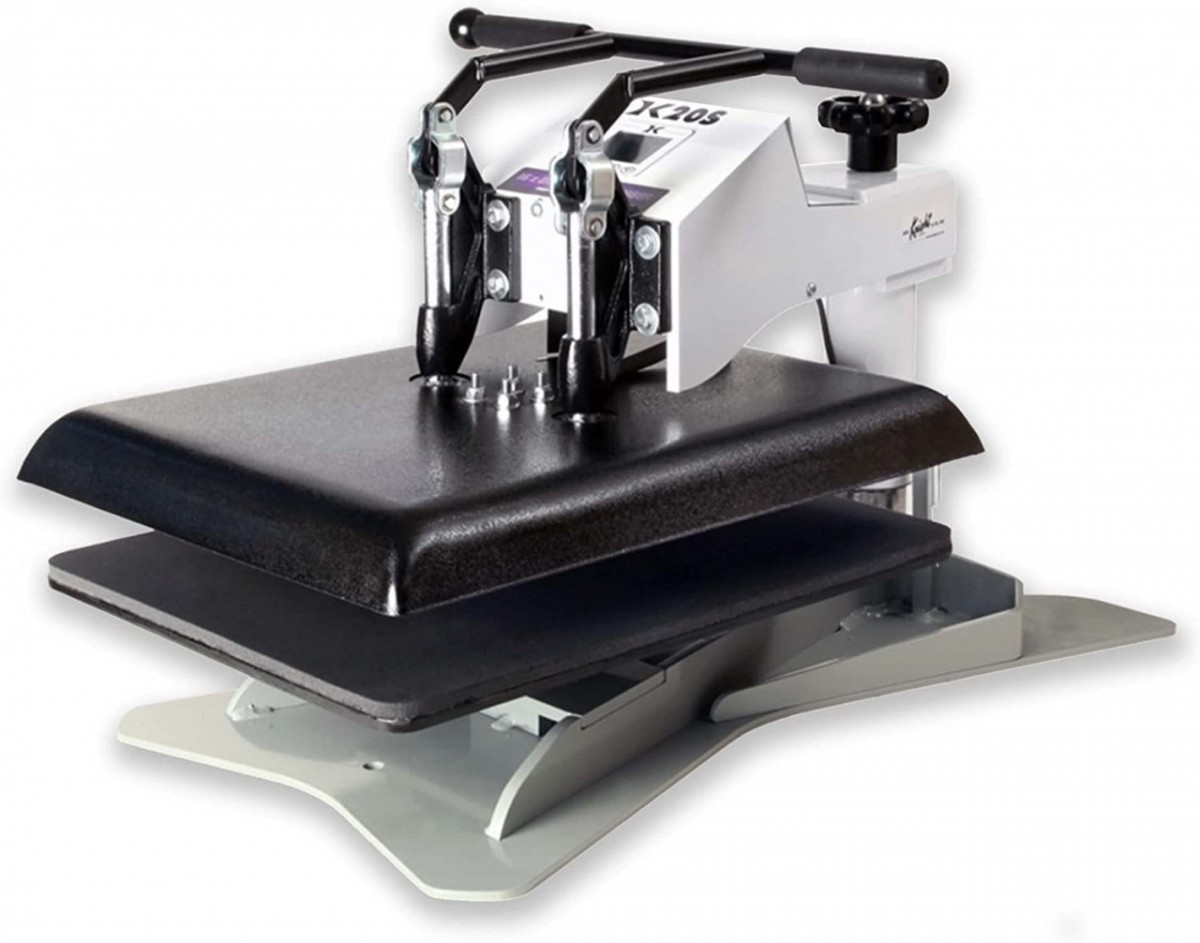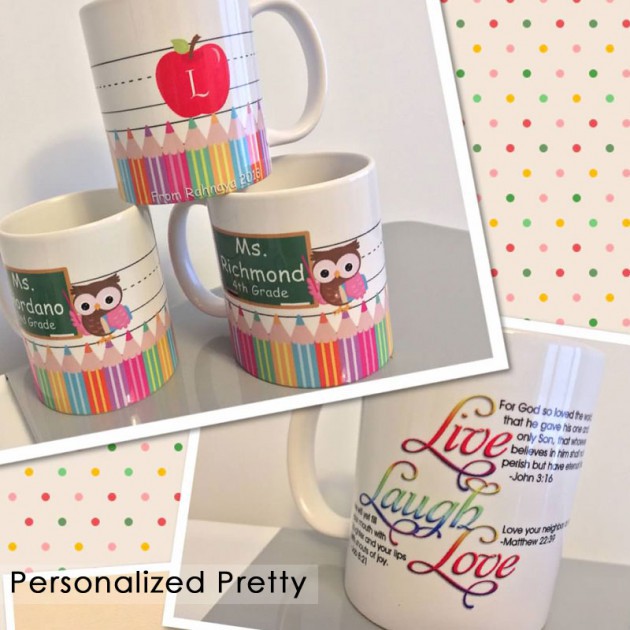What Is Sublimation Printing?
What is sublimation printing and what do you need to get started?
by Jeff Butler· Senior Strategist
The high-speed business of 'print-on-demand' custom printed products is driving customers wild with new and exciting must-haves. Perceived value of these products is at an all-time high. This means great returns for your print-on-demand business.
But what exactly is sublimation printing? It's definitely the buzz you’ve been hearing about in the custom decorated product world lately! Want to learn exactly how and what you need to get into the world of full-color sublimated products? Great! Let's take a deep dive into exactly what sublimation printing is and how it works.
What is sublimation?

Dye sublimation transfer is a process where you take a digital image, print it with a sublimation printer using sublimation inks, onto sublimation transfer paper. Once you’ve printed your sublimation transfer, you place it under a heat press, affixed to your polyester or poly coated item (substrate), and heat until the inks turn to a gas and transfer the image onto the item.
The finished results are INCREDIBLE and best of all, there’s NO weeding involved! From hard goods such as coffee mugs and aluminum photo panels, to soft goods like t-shirts, performance apparel, and pillow cases - the possibilities are endless!
The sublimation process combines the ink with the textile and permanently imprints the artwork or design into the substrate. The result is durable and significantly less prone to fading, as the dye penetrates the material instead of laying on top like a surface decoration technology such as heat transfer paper.
Once mastered, the sublimation process becomes just that - a process that can be replicated again and again allowing you to produce creative designs that stand out from the crowd.
What is a sublimation printer?

A sublimation printer is a purpose built inkjet printer that prints using sublimation ink instead of standard pigment ink. It is possible to convert select models of standard inkjet printers into sublimation printers but that's outside of the scope of this article. For now, we'll stick to the 3 most popular purpose built sublimation printers:
- Sawgrass SG500 Sublimation Printer
- Sawgrass SG1000 Sublimation Printer
- Epson F570 Sublimation Printer
If you haven't read my article 'The Ultimate Guide to Choosing a Sublimation Printer' I suggest hopping over and doing so as I compare all 3 of these models in great detail. Essentially, you're going to need to look at price, output size, and ink cost when comparing these 3 sublimation machines. When planning what products you want to sell, that's what you'll need to consider and the above mentioned article covers all of that.
Generally speaking, if your business model includes setting up and vending at events, the Sawgrass SG500 is perfect for portability. For a high volume production facility, you can’t beat the affordability and reliability of the Epson SureColor 570. For an all around workhorse, the Sawgrass SG1000 is the perfect choice.
Read: What is a Sublimation Printer and How Does It Work?
What is sublimation paper?
Think of sublimation paper as a 'carrier' of sublimation ink. It holds the ink in place so you can carry it to the heat press and mate it with the blank substrate. It sounds simple enough, however there are different papers that are developed for different substrates - namely soft substrates and hard substrates. Whereas a ceramic mug is a hard substrate, a t-shirt is a soft substrate.
Read: Everything You Ever Wanted to Know About Sublimation Paper - Explained in 10 Minutes!
Soft substrates such as mousepads, tote-bags, performance apparel, and fabrics are best transferred using a paper such as Jetcol high release transfer paper. When imprinting hard substrates such as ceramics, plastics, jewelry, metal and porcelain (but not glass), a paper such as the DyeTrans Multi Purpose sublimation paper is the right choice. For glass cutting boards, clocks and coasters we recommend Beaver TexPrint or JetCol.
It is important to note that you will not get desirable results using standard paper for sublimation transfers.
What is sublimation ink?
Sublimation ink is the 'water' of the sublimation ecosystem. In fact, sublimation ink is eco-friendly! Sublimation ink is a special mixture of water and heat reactive dyes - no solvents or additional chemicals are needed in the sublimation process. The two major players in the sublimation ink space are Sawgrass and Epson. Sawgrass Technologies issued the following statement in 2012:
“Please be advised that Sawgrass Technologies produces aqueous sublimation ink products using nonpigment based colorants and materials therefore contain no known heavy metals including Cadmium (Cd), Chromium (Cr), Lead (Pb), Mercury (Mg), Arsenic (As), Antimony (Sb), Barium (Ba), Cobalt (Co), Nickel (Ni), Selenium (Se) and Zinc (Zn). Sawgrass Technologies’ digital printing sublimation inks (non-plastisol aqueous inks) do not contain any hazardous chemicals and/or materials that are listed in the California Proposition 65, RoHS Directive 2002/95/EC, and/or listed in the Consumer Product Safety Improvement ACT of 2008 (CPISA, known as HR4040) such as phthalates or formaldehyde. Furthermore, due to specific advantages of digital sublimation transfer printing, the transfer printing, products manufactured by Sawgrass’ sublimation ink are free from any hazardous metals through the process.”
A recognized leader in sustainability, Epson, was named 'most sustainable company in Japan' by Forbes Japan magazine. Sublimation technology continues to lead the way in satisfying the current consumer demands for sustainability.
Eco-friendly? Check. But what about color and vibrancy?
You gotta see it to believe it! Both Sawgrass and Epson inks provide a level of exceptional color and vibrancy that is the industry standard. It's important to remember that both of these ink (and printer) manufacturers have decades of experience formulating sublimation ink to highest standards and both make for a solid and reliable choice.
Question: Can sublimation ink be used for regular printing?
Answer: Yes, sublimation ink can be used for regular printing, but (a) it's quite expensive compared to regular ink and (b) sublimation ink will not provide the right color output for your printed documents. Short answer: you can, but you don't want to.
What is a sublimation heat press?

A sublimation heat press is simply a heat press built using a swing-away design. The swing-away design makes it ideal for sublimation by allowing the operator full access to the pressing table with a swing of the handle.
What it takes to be a sublimation press:
- Top "swings-away" for full access to pressing table
- Even pressure across all 4 corners
- Consistent heat across all 4 corners
- Digital controls and timer
- Solid steel construction designed for heavy use
Check the specs and the Geo Knight DK20S checks all the boxes.
I personally recommend and love the the Digital Knight DK20S - the flagship 16x20 swing-away heat transfer press from Geo Knight & Co. Sublimation transfers require anywhere from 375° to 425° F and demand serious force in pressing, often from 40-80 psi. With a DK20S you know you're going to get consistent heat and consistent pressure every single time.
Read: DK20S - The Best Professional Heat Press for Sublimation?
There are several options when it comes to heat press machines - and many of you already have a press in your shop! The key takeaway is that you need a machine that's reliable and well built. As sublimation ink is the 'water' in the sublimation eco-system, the heat press is the sun. Buy as good of a machine as you can afford. A heat press is a versatile tool and can be used for many other decorating and manufacturing processes such as t-shirt transfers, vinyl, embroidered patches, and even rhinestone transfers. Buy quality and buy it once.
What can you sublimate on?
What exactly can you make using sublimation? For starters - full color name badges, coffee mugs, metal art prints, home decor items, personalized keepsakes - the list goes on!
Sublimation ink is an oil-loving molecule and that means it has a natural bond with polyester - specifically in the form of coatings and materials. A sublimation coating is a clear polyester based material that captures dye in the tightest possible pattern for superior resolution. Sublimation likes white and light-colored materials and fabrics. There is no white sublimation ink. You cannot, in the traditional sense, sublimate on dark materials or fabrics, however there are many new technologies pursuing just that. EasySubli Vinyl and ChromaBlast are two such technologies.
Read: The Ultimate Guide to the Top Sublimation Products You Should Be Selling
The world of blank sublimation products is exploding right now. You have more options for high quality, in-demand, and on-trend products than ever before. Every day a new product or line of products seems to pop up. Laser cutters open the door to even more options as you have the ability to precisely cut your own custom sublimation blanks from a host of sublimation-ready sheet stock options available.
How do I price sublimation products for retail?

One of the most common questions I'm asked is “how much should I charge for a sublimated “X”? As a creative entrepreneur, naturally you want to focus on creating great looking, quality products for your customers.
With so many great blank substrates available, simply choosing which products will work for your business can be a challenge itself! Once you dial in a new technique or design for a substrate you intend to sell, you'll need to determine what it's worth.
The key factors to consider when pricing custom print-on-demand products for retail are cost of goods sold (COGS), production time, consumables such as ink and paper, packaging, shipping, and marketing expenses. Once you have a basic formula for these factors, you can begin to put together a solid retail pricing strategy.
Check out my article 'The Ultimate Guide to Retail Pricing Sublimation Products' for a full, in-depth strategy for maximizing your ROI when pricing your products for retail.
Is sublimation printing profitable?

Provided you already have a heat press, for as low as $574 you can acquire a sublimation printer, sublimation inks, and paper and be up and running in an afternoon. What is the ink cost moving forward? One penny per square inch of the printed transfer. Double that and you have your complete ink + paper cost.
Let's talk ROI. A typical example of a common product is an 11oz ceramic coffee mug. Add your customers logo or image and you’re into the completed item at ~$2.00. Retail? $16.00-$20.00! Adding a premium licensed art image from a known artist can drive that retail number even higher. Another typical example is a name badge: cost: $1.25 - retail: $8.00 - $12.00. I think you get the drift - there’s money to be made!
Adding sublimation printing to your business is the first step in a long-term strategy with excellent scalability. It's eco-friendly and sustainable. It's in-demand and customer perceived value is at an all-time high. As your confidence and skill set grows, so will your product offerings and profits.
Read: 10 Ways to Grow Your Sublimation Business in 2023!

by Jeff Butler · Senior Strategist
Conde Systems, Inc.
The Ultimate Guide to the Top Sublimation Products You Should Be Selling
The high-speed business of 'print-on-demand' custom printed products is driving customers wild with new and exciting must-haves. This means great returns for your print-on-demand business however, it's important to stay on top of the current trends in the marketplace to ensure you're offering your customers the hottest items that are in demand.
Check out our guide below:
The Ultimate Guide to the Top Sublimation Products You Should Be Selling
